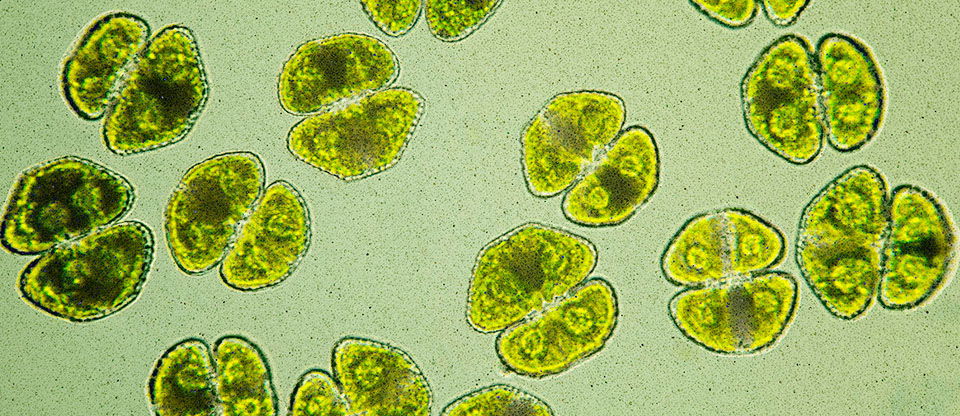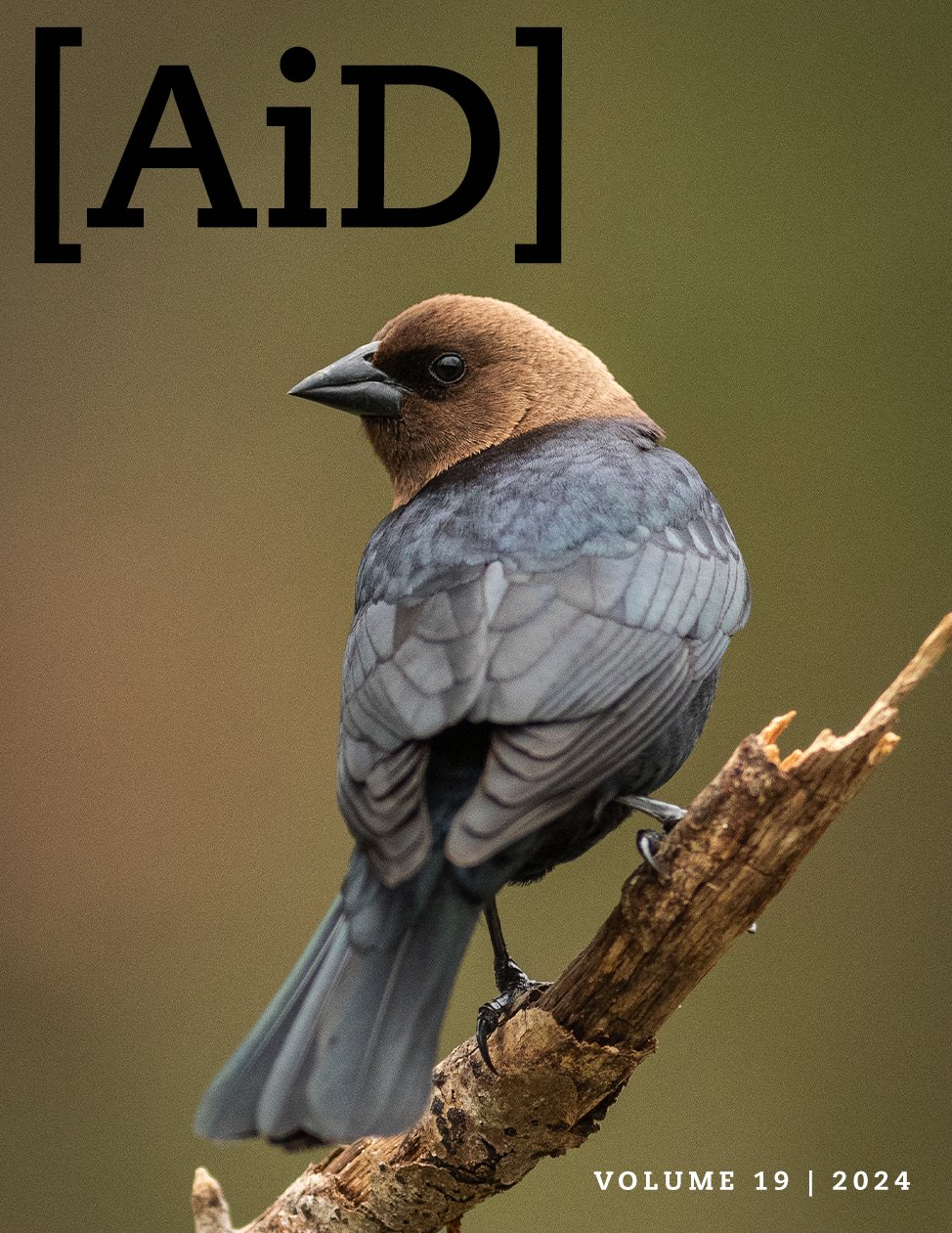
Did Two Life-Forms Merge to Create a New Organelle?
Nitrogen, News, and Nonsense
Abstract
There has been a lot of media hype recently over the discovery of a nitrogen-fixing organelle in a saltwater alga. The hype has been so strong that some pop-sci sites have proclaimed it a “once in a billion year” event. However, stripping away the hype and digging into the evidence reveals that, while the discovery is unique and interesting, evolutionists have nothing to be excited about. It provides no evidence for the evolutionary model.
Recently, there has been a raft of pop-sci headlines proclaiming something like this: “Scientists Discover Once-in-a-Billion-Year Event—2 Lifeforms Merging to Create a New Cell Part.”1 Of course, pop-sci articles are largely just propaganda based on university press releases and carefully catered quotes from scientists, so this is hardly surprising. When you strip away the trappings, you’ll discover that the pop-sci articles are all wet (entirely wrong).
So just what are LiveScience and the other pop-sci sites crowing about? A tiny oceanic organism usually abbreviated to UCYN-A. UCYN-A is believed to be an endosymbiont of Braarudosphaera bigelowii, a phytoplankton species.2 An endosymbiont is an organism that lives inside another organism and lives in a mutually beneficial relationship with the organism. UCYN-A lives inside B. bigelowii, and the two benefit each other in a symbiotic fashion.
In the recent pop-sci article, the authors claim that the UCYN-A has become a cellular organelle. Organelles are subunits of the cell that perform a cellular function. For example, the mitochondria produce energy for the cell. According to the evolutionists, some organelles, like the mitochondria, evolved by the cell ingesting a free-living organism and incorporating it into its metabolic cycle. However, there is exactly zero evidence for this—until now (at least according to the evolutionists).
According to the LiveScience article, the evidence for UCYN-A’s progress toward a cellular organelle is that it has lost some of its cellular apparatus and cannot live independently.3 One of the two papers on which the pop-sci article is based goes further. UCYN-A receives proteins from its host, has a much-reduced genome, replicates with its host, and is associated with its host’s mitochondrial network.4 That sounds like good evidence of a transition from a free-living organism to a cellular organelle and would be a huge step for the evolutionists because UCYN-A is a nitrogen-fixing endosymbiont. No nitrogen-fixing organelles exist in nature, and evolutionists have been puzzled as to why none evolved.
Is UCYN-A an Independent Creature or Part of Its Host?
As usual, however, the ointment has a rather large and ugly fly. The initial problem is that UCYN-A has not been independently cultivated.5 What that means is it has yet to be separated from its supposed host and grown in the lab. In itself, that is not conclusive. It is possible we simply do not know how to cultivate UCYN-A yet. However, there are other factors to consider. UCYN-A fixes nitrogen and then passes that nitrogen to its host in exchange for carbon. The cell tightly regulates this exchange, even when environmental conditions differ.6 Further, even when environmental nitrogen is plentiful, the cell still relies on UCYN-A to fix the majority of its required nitrogen.7 What this means is that UCYN-A and its host are deeply interconnected.
Further, the UCYN-A genome lacks many genes that would be necessary to be free-living. Typical cyanobacteria have a photosystem to produce oxygen and a second pathway to fix atmospheric carbon. UCYN-A lacks both and has a genome much smaller than expected.8 In fact, the genome is even referred to as being similar to chloroplast genomes. In a paper looking at two sub-lineages of UCYN-A, the authors suggested that the two lineages and their hosts had “co-evolved” independently.9 This means that the two hosts and the two UCYN-A lineages were different. These two sub-lineages lack the same pathways and have 96.6% of the same genes, likely indicating a common ancestral origin.10
The standard hypothesis has been that UCYN-A inhabits B. bigelowii as an endosymbiont. As an endosymbiont, it shed a large chunk of its genome that it no longer needed as it could get its carbon and oxygen from its host. In support of this hypothesis is the symbiotic nature of its relationship with its host (both benefit). Also, a 2013 study found that there were DNA similarities between B. bigelowii’s spherical internal structure and UCYN-A, leading the authors to conclude that UCYN-A was an endosymbiont in B. bigelowii.11 Even before then, UCYN-A was hypothesized to be in a symbiotic relationship with B. bigelowii due to its inability to obtain the carbon it needs to survive independently.12
With all that information out of the way, we need to briefly discuss the difference between an organelle and an endosymbiont. The consensus seems to be that endosymbionts make all the proteins they need, while organelles must import them from the rest of the cell.13 Gene transfer between the cell and its “emerging” organelle is sometimes included as well, though this assumes that there is a gradual transition between endosymbiont and organelle.14 Also sometimes included is the idea of a bilayer surrounding organelles but not endosymbionts.15 UCYN-A has three layers separating it from its host, which were hypothesized to represent an inner and outer membrane separated by a peptidoglycan wall.16
UCYN-A: Not an Example of Evolution
So what is really going on? Breaking through the smoke, mirrors, and contradictory evidence, it appears that the researchers misidentified UCYN-A when it was discovered. It is not a cyanobacteria and never was: it is a previously undiscovered type of organelle. One paper even called it “a very unusual cyanobacterium.”17 The fact that UCYN-A needs proteins from its purported host is a very strong point in favor of the organelle position. This, however, does not mean that it evolved from a previous endosymbiont.
There are a litany of problems with the idea of developing free-living bacteria into an organelle.
There are a litany of problems with the idea of developing free-living bacteria into an organelle. While these problems have been dealt with elsewhere, a brief summary will suffice here. The host organism must have been phagocytizing (many organisms are not) yet did not digest one lucky meal. The meal could survive not being free-living, so the formerly free-living organism must have immediately synchronized its cell cycle with its host due to short replication times; however, some organelles are more complex than their supposed ancestors, so a system to uptake and use proteins from the host had to develop among many other necessary changes. In short, UCYN-A would have a lot of hurdles to jump through to go from a free-living organism to an endosymbiont, let alone an organelle.
The case of UCYN-A is an interesting one but does not represent what pop-sci articles claim. Whatever it turns out to be, it is definitely not a case of evolution in action. It most likely is a case of mistaken identity that is slowly being corrected. After all, scientists are not infallible.
Answers in Depth
2024 Volume 19
Answers in Depth explores the biblical worldview in addressing modern scientific research, history, current events, popular media, theology, and much more.
Browse VolumeFootnotes
- Pare, Sascha, “Scientists Discover Once-in-a-Billion-Year Event—2 Lifeforms Merging to Create a New Cell Part,” Microbiology, Planet Earth, LiveScience, April 22, 2024, https://www.livescience.com/planet-earth/microbiology/scientists-discover-1st-of-its-kind-cell-part-born-from-a-swallowed-microbe.
- Thompson, Anne, Rachel Foster, Andreas Krupke, Brandon Carter, Niculina Muscat, Daniel Vaulot, Marcel Kuypers, and Jonathan Zehr, “Unicellular Cyanobacterium Symbiotic with a Single-Celled Eukaryotic Alga,” Science 337, no. 6101 (2012): 1546–1550, https://www.science.org/doi/abs/10.1126/science.1222700.
- Pare, “Scientists Discover Once-in-a-Billion-Year Event.”
- Coale, Tyler, Valentina Loconte, Kendra Turk-Kubo, Bieke Vanslembrouck, Wing Kwan Esther Mak, Shunyan Cheung, Axel Ekman et al., “Nitrogen-Fixing Organelle in a Marine Alga,” Science 384, no. 6692 (April 2024): 217–223, https://www.science.org/doi/abs/10.1126/science.adk1075.
- Cornejo-Castillo, Francisco, Keisuke Inomura, Jonathan Zehr, and Michael Follows, “Metabolic Trade-Offs Constrain the Cell Size Ratio in a Nitrogen-Fixing Symbiosis,” Cell 187, no. 7 (March 2024): 1762–1768, https://doi.org/10.1016/j.cell.2024.02.016.
- Krupke, Andreas, Wiebke Mohr, Julie LaRoche, Bernhard Fuchs, Rudolf Amann, and Marcel Kuypers, “The Effect of Nutrients on Carbon and Nitrogen Fixation by the UCYN-A-haptophyte Symbiosis,” The ISME Journal 9, no. 7 (July 2015): 1635–1647, https://www.nature.com/articles/ismej2014253.pdf.
- Mills, Matthew, Kendra Turk-Kubo, Gert van Dijken, Britt Henke, Katie Harding, Samuel Wilson, Kevin Arrigo, and Jonathan Zehr, “Unusual Marine Cyanobacteria/Haptophyte Symbiosis Relies on N2 Fixation Even in N-Rich Environments,” The ISME Journal 14, no. 10 (October 2020): 2395–2406, https://academic.oup.com/ismej/article/14/10/2395/7474749.
- Tripp, H. James, Shellie R. Bench, Kendra A. Turk, Rachel A. Foster, Brian A. Desany, Faheem Niazi, Jason P. Affourtit, and Jonathan P. Zehr, “Metabolic Streamlining in an Open-Ocean Nitrogen-Fixing Cyanobacterium,” Nature 464 (2010): 90–94, https://www.nature.com/articles/nature08786.
- Thompson, Anne, Brandon Carter, Kendra Turk-Kubo, Francesca Malfatti, Farooq Azam, and Jonathan Zehr, “Genetic Diversity of the Unicellular Nitrogen-Fixing Cyanobacteria UCYN-A and Its Prymnesiophyte Host,” Environmental Microbiology 16, no. 10 (2014): https://escholarship.org/content/qt4687q7k8/qt4687q7k8.pdf.
- Bombar, Deniz, Philip Heller, Patricia Sanchez-Baracaldo, Brandon Carter, and Jonathan Zehr, “Comparative Genomics Reveals Surprising Divergence of Two Closely Related Strains of Uncultivated UCYN-A Cyanobacteria,” The ISME Journal 8, no. 12 (2014): 2530–2542, https://www.nature.com/articles/ismej2014167.pdf.
- Hagino, Kyoko, Ryo Onuma, Masanobu Kawachi, and Takeo Horiguchi, “Discovery of an Endosymbiotic Nitrogen-Fixing Cyanobacterium UCYN-A in Braarudosphaera bigelowii (Prymnesiophyceae),” PLoS One 8, no. 12 (2013): e81749, https://journals.plos.org/plosone/article?id=10.1371/journal.pone.0081749.
- Thompson, “Unicellular Cyanobacterium Symbiotic.”
- Theissen, Ursula, and William Martin, “The Difference Between Organelles and Endosymbionts,” Current Biology 16, no. 24 (2006): R1016–1017, https://www.cell.com/current-biology/pdf/S0960-9822(06)02496-1.pdf.
- Archibald, John, and Takuro Nakayama, “Evolving a Photosynthetic Organelle,” BMC Biology 10, no. 35 (2012): https://link.springer.com/article/10.1186/1741-7007-10-35.
- Zehr, Jonathan, Irina Shilova, Hanna Farnelid, Maria del Carmen Muñoz-Marín, and Kendra Turk-Kubo, “Unusual Marine Unicellular Symbiosis with the Nitrogen-Fixing Cyanobacterium UCYN-A,” Nature Microbiology 2, no. 1 (2017): https://escholarship.org/content/qt3jc282mc/qt3jc282mc.pdf.
- Hagino, “Discovery of an Endosymbiotic Nitrogen-Fixing Cyanobacterium.”
- Zehr, “Unusual Marine Unicellular Symbiosis.”
Recommended Resources

Answers in Genesis is an apologetics ministry, dedicated to helping Christians defend their faith and proclaim the good news of Jesus Christ.
- Customer Service 800.778.3390
- © 2024 Answers in Genesis




